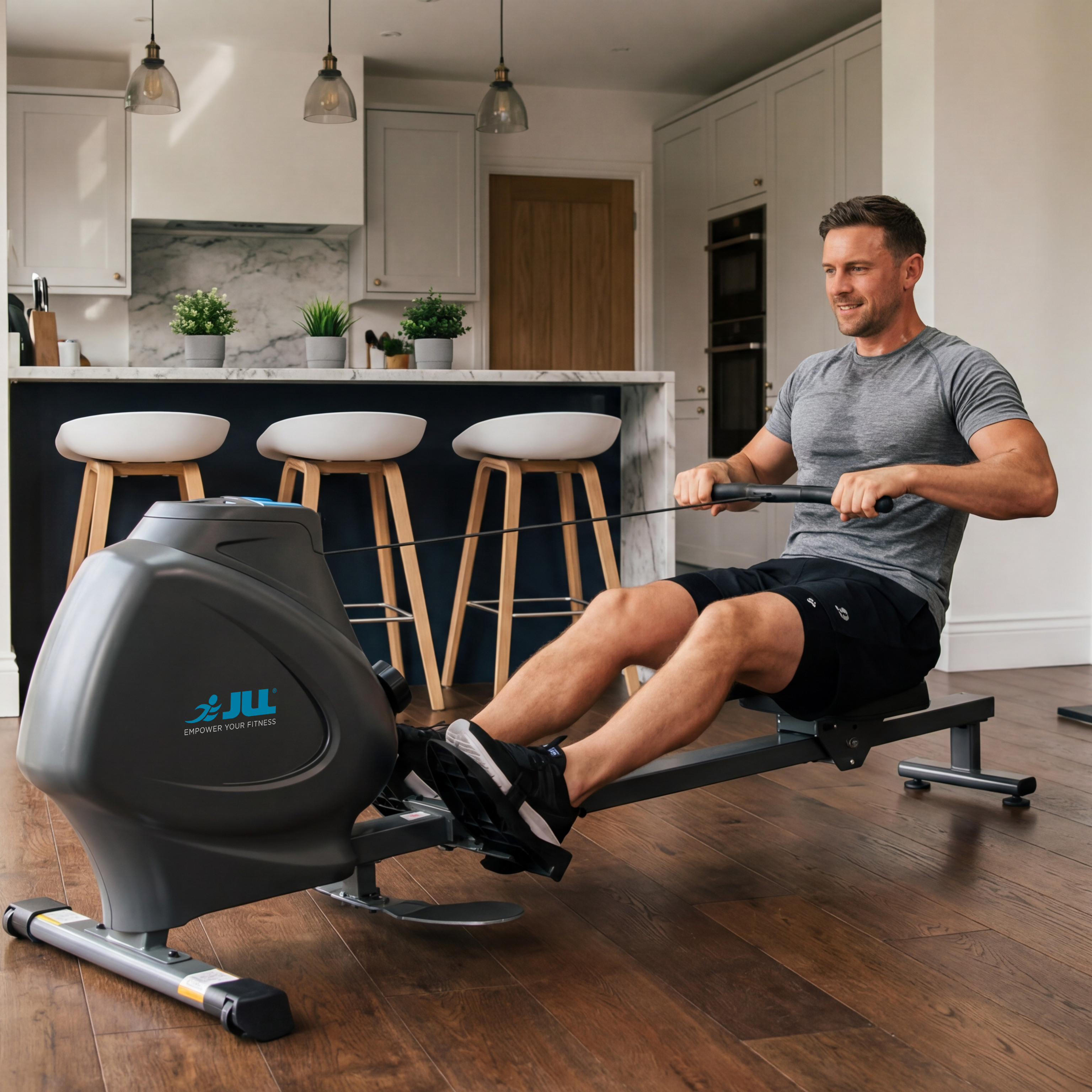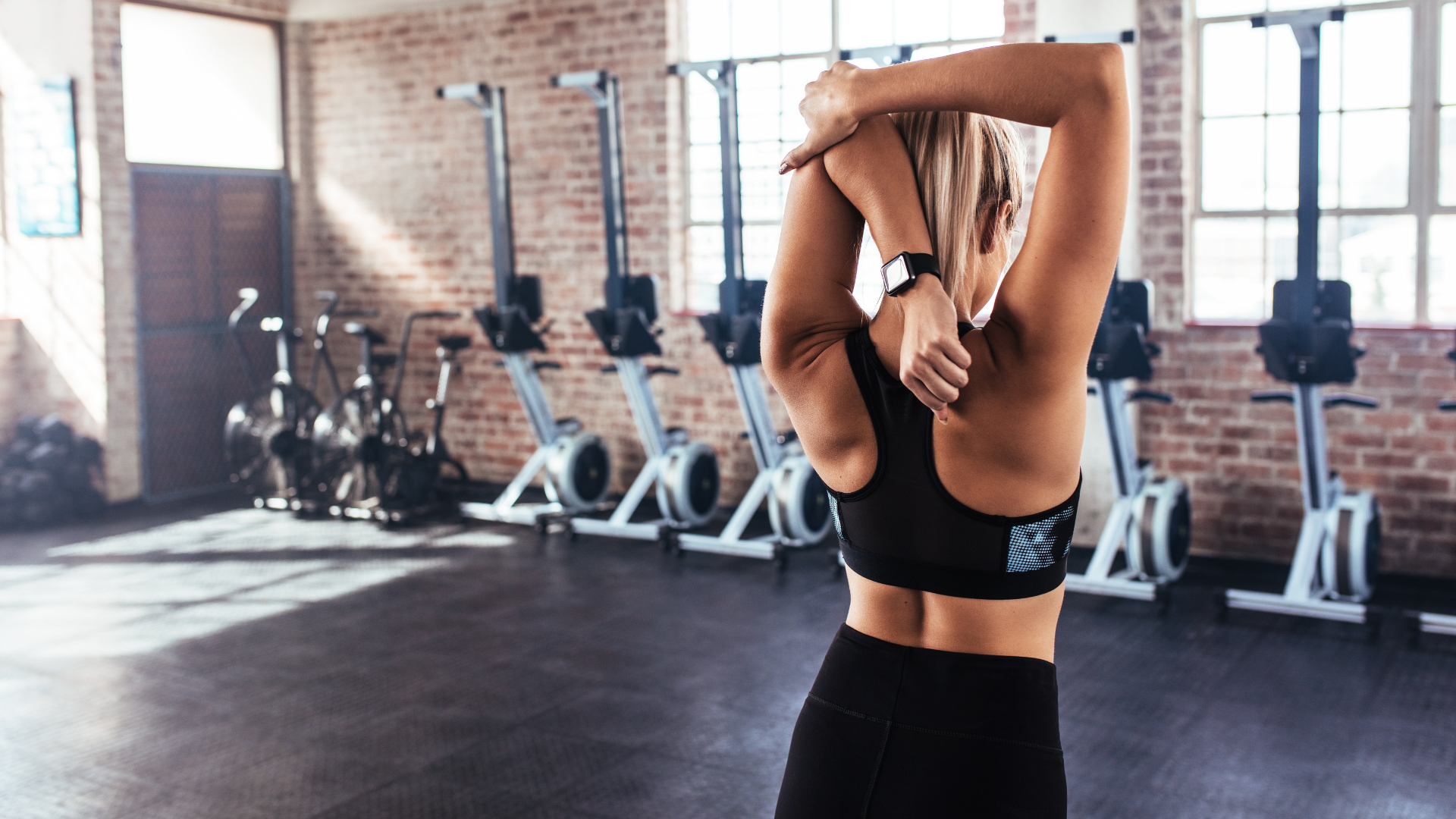HYROX is a fitness race that combines functional strength exercises with endurance running. While it typically takes place in a gym or race environment, you can still train for HYROX at home with minimal equipment and space. Here’s how you can structure your home training to prepare for a HYROX event:
1. Understanding the HYROX Event Structure
HYROX events consist of 8 rounds of 1 km runs, each followed by a functional fitness movement. The exercises include:
- Ski Erg
- Sled Push
- Sled Pull
- Burpee Broad Jumps
- Rowing
- Farmers Carry
- Sandbag Lunges
- Wall Balls
At home, you can simulate most of these exercises with bodyweight, minimal equipment, and space modifications.
2. Essential Equipment for At-Home HYROX Training
While you don’t need a fully equipped gym, having a few key pieces of equipment can help mimic the exercises more closely:
- Kettlebell or Dumbbells (for farmer’s carries, sandbag lunges)
- Jump Rope (for cardio warm-up)
- Resistance Bands (for strength exercises or simulating sled pushes/pulls)
- A Medicine Ball or Sandbag (for wall balls, sandbag lunges)
- A Towel (as a substitute for a sled pull on a smooth floor)
3. Sample At-Home HYROX Training Program
Warm-Up (10 minutes)
- Jump Rope or Jog in Place: 3 minutes to elevate heart rate.
- Dynamic Stretches: Arm circles, leg swings, hip openers, and lunges to loosen up your joints.
- Bodyweight Movements: Do 10 air squats, 10 push-ups, and 10 burpees to prep your muscles.
4. Run and Functional Exercise Circuits
Circuit 1: Cardio & Ski Erg Simulation (Running + Shoulder Activation)
- 1 km Run: Run outdoors or simulate by doing 4-6 minutes of high knees or jumping jacks.
- Ski Erg Simulation: Stand and perform a resistance band pull-down. Attach the resistance band to a high point (like a door) and pull downwards in a similar motion as using a Ski Erg. Do 30-50 reps.
Circuit 2: Running + Sled Push Simulation
- 1 km Run
- Sled Push Simulation: Place a towel on a smooth floor surface (like hardwood) and push it across the room while in a low squat stance. Push with as much force as possible for 30-40 seconds.
Circuit 3: Running + Burpee Broad Jumps
- 1 km Run
- Burpee Broad Jumps: Perform a burpee, followed by a broad jump. Continue this for 20 meters (or as far as space allows).
Circuit 4: Running + Rowing Simulation
- 1 km Run
- Rowing Simulation: Use a resistance band to simulate rowing by anchoring it to a low point and pulling towards you. Perform 20-30 reps or mimic the rowing motion with a kettlebell or dumbbell for 1 minute.
Circuit 5: Running + Farmers Carry
- 1 km Run
- Farmers Carry: Grab a heavy kettlebell, dumbbell, or any weighted object in each hand and walk 200 meters (or as far as your space allows). If indoors, pace back and forth in a straight line or around your living area.
Circuit 6: Running + Sandbag Lunges
- 1 km Run
- Sandbag Lunges: Hold a weighted object like a backpack, medicine ball, or dumbbell on your shoulders and perform alternating lunges for 20 reps per leg.
Circuit 7: Running + Wall Balls
- 1 km Run
- Wall Balls: If you don’t have a medicine ball, use any soft weighted object. Squat down, then explosively stand and toss the ball to a high target (if inside, aim for a spot on the wall). Perform 20-30 reps.
5. Modifications for Small Spaces
If you don’t have access to large spaces or long running tracks, modify the run by:
- Jogging in place or doing high knees for 4-6 minutes.
- Jump Rope for 5 minutes.
- Treadmill Running if you have one.
6. Incorporating Strength Workouts
In addition to the cardio-functional circuits, HYROX requires functional strength to handle sled pushes, lunges, and wall balls. Add strength days into your weekly routine focusing on:
- Squats (bodyweight, goblet squats with dumbbells or kettlebells)
- Lunges (weighted or bodyweight)
- Push-Ups (regular or elevated to simulate wall balls)
- Deadlifts (with dumbbells or kettlebells)
- Core Work: Planks, Russian twists, and leg raises to improve stability during carries and functional movements.
7. Weekly Training Plan
Aim to train 4-5 times a week. Here’s a balanced weekly structure for HYROX prep:
- Day 1: Full HYROX simulation circuit (as outlined above)
- Day 2: Strength-focused day (squats, lunges, deadlifts, push-ups)
- Day 3: Rest or active recovery (light cardio, mobility work)
- Day 4: HYROX simulation (modify intensity or target specific weak areas)
- Day 5: Strength and core day (farmers carries, planks, Russian twists)
- Day 6: Rest or light cardio (walking, cycling)
- Day 7: Rest day or flexibility/mobility work
8. Recovery and Nutrition
- Rest: Ensure you’re getting adequate sleep and rest days to allow your body to recover.
- Hydration: Drink plenty of water, especially if you're doing intense cardio at home.
- Protein intake: Keep your diet rich in protein to support muscle recovery and strength gains.
- Stretching: Incorporate stretching or yoga to improve mobility and prevent injury.
9. Progress Tracking
- Track your run times and see how they improve week by week.
- Log your strength numbers: If you’re using dumbbells or kettlebells, track the weight and reps to ensure you are progressively overloading.
- Test your endurance by doing a HYROX simulation every 4-6 weeks and compare your times.
Training for HYROX at home is completely possible with a bit of creativity and minimal equipment. Focus on building your endurance, improving your functional strength, and simulating the race conditions as best as possible. With a structured routine, you’ll be well-prepared for the physical and mental demands of the race!








Leave a comment
All comments are moderated before being published.
This site is protected by hCaptcha and the hCaptcha Privacy Policy and Terms of Service apply.